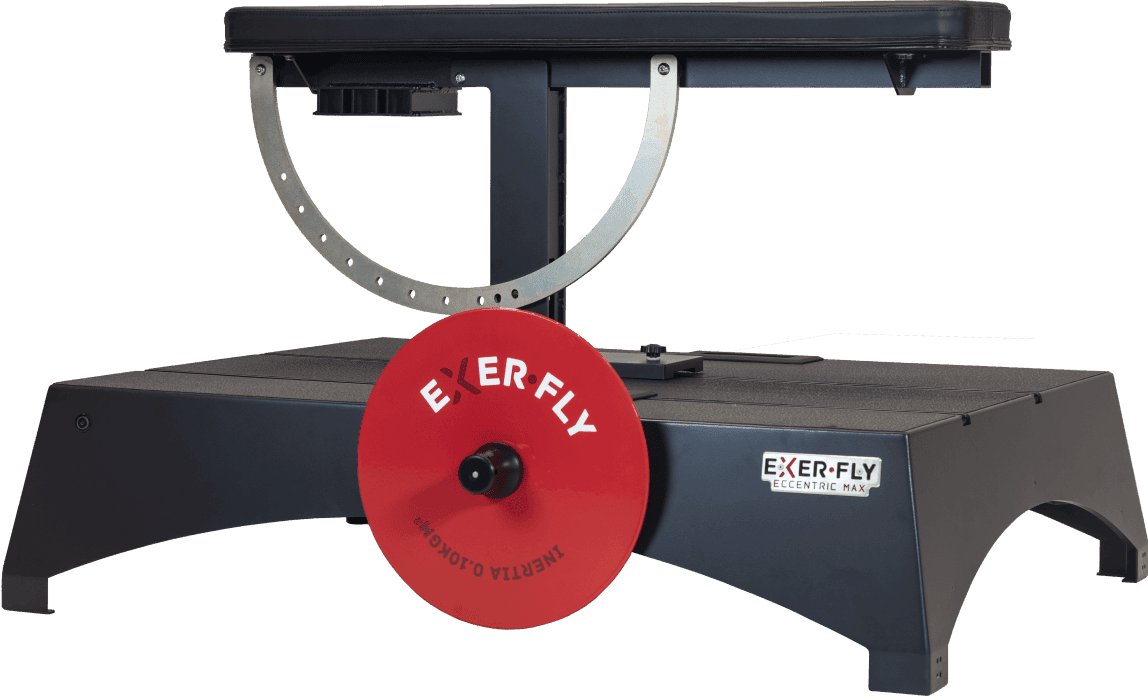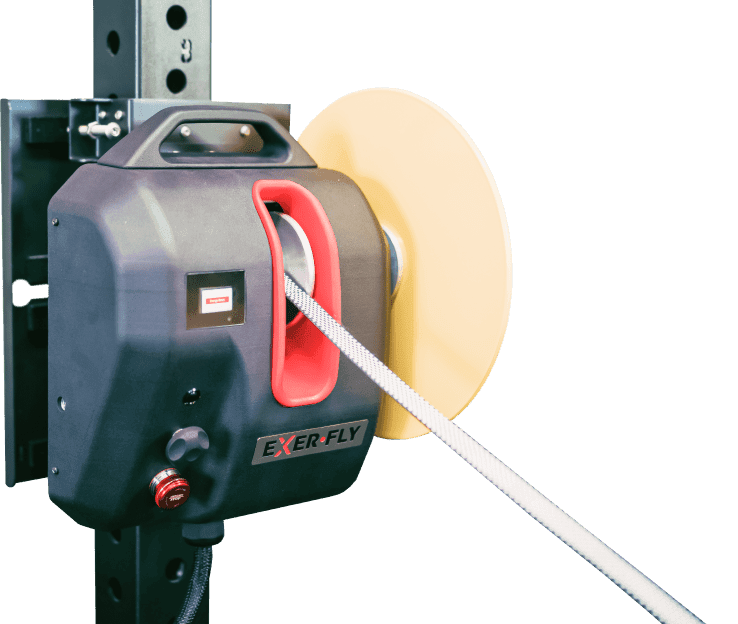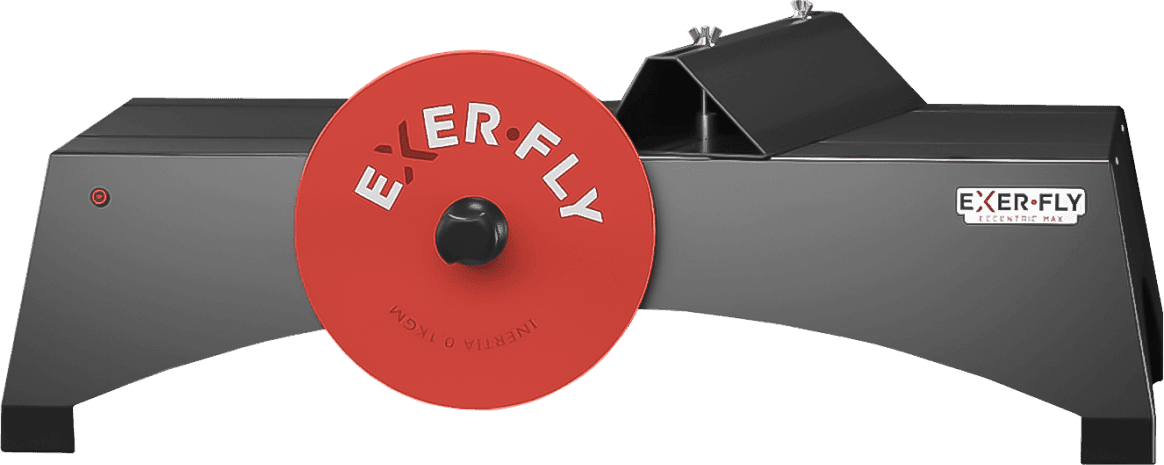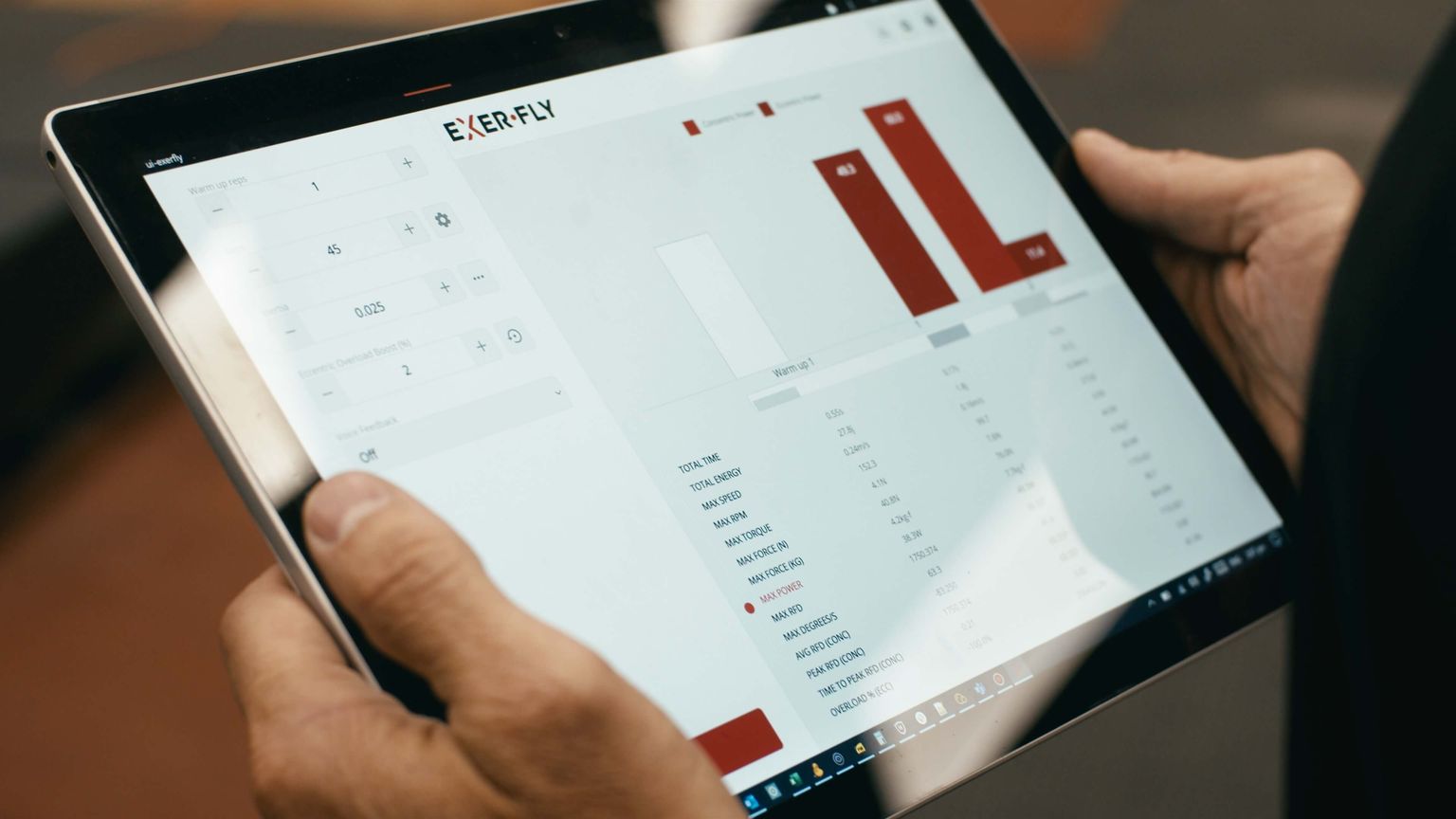
Moxy Monitor & Exerfly Flywheel Training Integration
The Moxy Monitor is a device for measuring oxygen delivery and utilization within the muscular tissue. These devices are called Near-infrared spectroscopy (NIRS) devices. However, it has been used in many sporting environments, primarily in endurance sports such as running and cycling (2).
The utilization of Moxy monitors within our training can aid us in driving our overall intent of the session and the type of muscular contractions we are aiming for.
Utilizing a flywheel for your training allows for a wide array of intent behind your daily training. With the opportunity to improve or increase coordination & rhythm within your training, to increase power output while increasing eccentric overload or force absorption are some of the many draws to flywheel training.
The ability to track power outputs via the Exerfly app is one way to monitor fatigue within a set. However, utilizing Moxy Monitors allows you to keep your sets, reps and recovery dialed in to the exact intent of your training for that set or that entire training session.
Oxygen Delivery vs. Utilization
The important takeaway is that oxygen is energy. So, when should you be focusing on oxygen (energy) utilization? There are many different times when you may want to focus on utilization, but we will keep it simple for this blog.
The more oxygen one can utilize, the more energy one can put into an effort. For sport, think about the importance of repeated efforts, whether it be sprints, throws, blocks, etc.
The more oxygen we can use during these periods, the better opportunities for our athletes' health and performance.
What about oxygen delivery? Oxygen delivery is when we are about to "refill our fuel tank" as an easier way to understand it. If our tissues do not have very much oxygen (energy) to burn up and use, our ability for sustained performance may be hindered.
The more oxygen is available, the more potential energy we can use for our sporting efforts. This is an area that often gets ignored but is crucial for our ability to recover as well! Think of this as your aerobic system, as that's the foundation of energy usage, just like your gas tank is with your car.
Moxy Monitor Integration With Exerfly Flywheel Training
One of the ideas we discussed was the coordination of or rhythm within your training. This can look many different ways; however, we have all seen our athletes or clients perform an exercise that was done poorly. This is why we coach! However, the flywheel offers the chance to coach for you with the self-limiting system and speed of the flywheel.
Now, you couple that with keeping within physiologic "coordination" while using a Moxy monitor, and this picture becomes clearer. The Moxy will show us that we are utilizing oxygen and delivering oxygen back to the tissue during the exercise, as shown in the graph below.
However, when these lines cross, the ability to deliver oxygen has been superseded by the tissue’s requirements for utilization, thus a loss in coordination.

When this cross occurs, it's called a venous occlusion. This naturally occurs during powerful movements or as you begin to fatigue within a movement. Maybe it’s a sprint acceleration, perhaps it's your 6th rep of a back squat, or it could be a power output on a flywheel that you struggled to decelerate. They all create similar-looking (I did not say the same) physiological pictures.
There are good responses that occur during these occlusions, a list for another post. Still, the ability to recover, or for the tissue to relax, following these occlusions is paramount to recovery and athletic performance.
As you can see in the graph below, it is still possible to utilize oxygen when the occlusion occurs. However, the tissue's ability to "let go" and allow full oxygen delivery back into the tissues allows for repeated quality efforts.
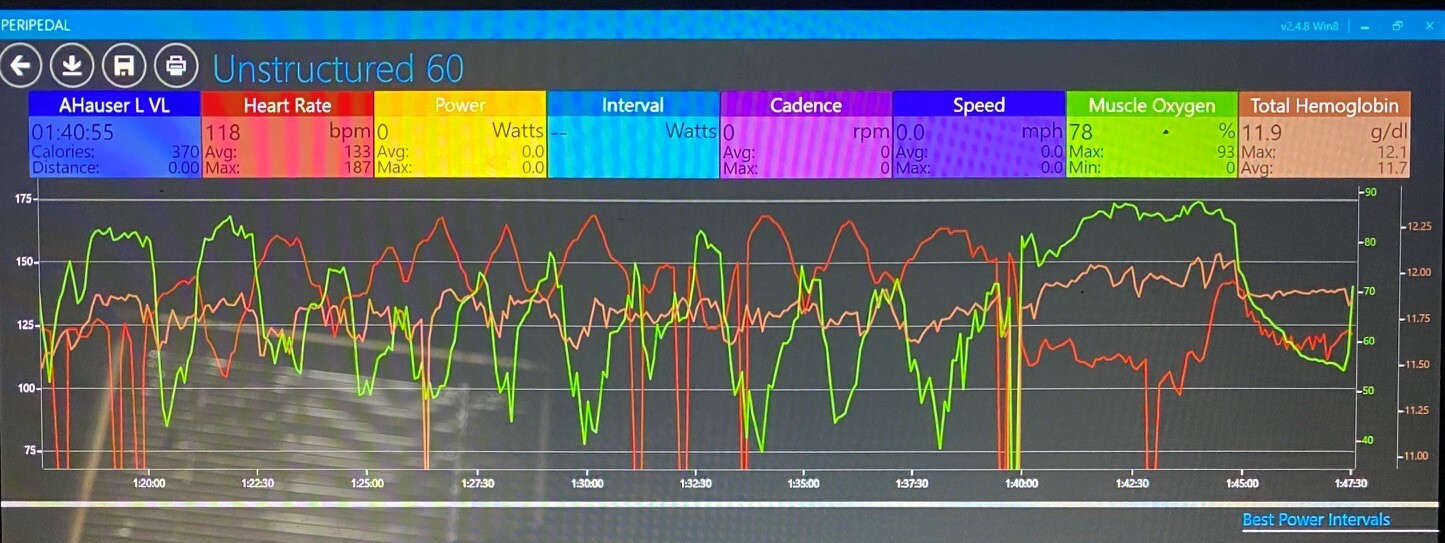
Efforts that focus on one end of this oxygen delivery or oxygen utilization continuum, or both, will see improvements in VO2 max, as exemplified in the Fick Formulat and (a-v) (1). Performing activities that occur at high power outputs and speeds or that continue beyond fatigue work the utilization portion of this continuum.
This aids in the growth of our capillary beds (3) and will raise CO2 levels within the tissue. I must note that this is where much hypertrophy training occurs and where you often experience DOMS. Whether the intent is true or not, this is an area that much training in team sports is focused on.
Flywheel training for utilization is something that many of us have experienced with our use of the flywheel as the constant tension during a set (4) aids in further utilization of oxygen within the muscular tissue.
Hypertrophy training occurs at this end of the spectrum, as does increasing repetitions. This is an area that is much easier to attain with our training, and athletes love this type of work because they will generally "feel something."
Training that occurs at the other end of that continuum, as in low, slow aerobic development, will push the increase in oxygen, so the CO2 you were able to build on the other end of your training has "friends" to deliver to the part.
If you stay within "coordination" during your training, then you will drive an adaptation of balanced utilization and delivery and high repeatability and efficiency. The body is always looking to be more efficient, this has a high upside, but multiple qualities must be driven for overall physiological development.
You can do Flywheel training for delivery in several different ways. However, the most important aspect when discussing delivery is recovery. The ability to perform repetitions then allows for full oxygen recovery.
The example below would have been a slower, drawn-out repetition (isometrics can look like this as well), that once the tension was released, the oxygen (green) "overshot" and oxygen delivery was enhanced.
You could do this with short sets of fast reps on the Flywheel that then you fully recover from before going again. This may only be 3-4 reps at a time of a high effort. The trend of such a move provides an opportunity for oxygen to be delivered in anticipation of more repetitions.

Your starting point is to decide what qualities you want to work on within a training session with your athletes. Once you understand your intent, it's about utilizing the Moxy to help frame that intent for the physiological response you're looking to drive.
The Moxy Monitor(s) allow you to keep within a framework of performance potential without overdoing it and maintaining the quality of output and recovery high. It has been proven repeatedly with flywheel training to increase eccentric overload, thus creating greater strength gains (6).
References:
- Rowland, T. W. (2005). Circulatory responses to exercise. Chest, 127(3), 1023–1030. https://doi.org/10.1378/chest.127.3.1023
- Feldmann, A., Schmitz, R., & Erlacher, D. (2019). Near-infrared spectroscopy-derived muscle oxygen saturation on a 0% to 100% scale: Reliability and validity of the Moxy Monitor. Journal of Biomedical Optics, 24(11), 1. https://doi.org/10.1117/1.jbo.24.11.115001
- Piucco, T., Soares, R., Diefenthaeler, F., Millet, G. Y., & Murias, J. M. (2018). Oxygen uptake and muscle deoxygenation kinetics during skating: Comparison between slide-board and Treadmill Skating. International Journal of Sports Physiology and Performance, 13(6), 783–788. https://doi.org/10.1123/ijspp.2017-0440
- Vicens-Bordas, J., Esteve, E., Fort-Vanmeerhaeghe, A., Bandholm, T., & Thorborg, K. (2018). Skeletal muscle functional and structural adaptations after eccentric overload flywheel resistance training: A systematic review and meta-analysis. Journal of Science and Medicine in Sport, 21(1), 2–3. https://doi.org/10.1016/j.jsams.2017.09.001
- Norrbrand L., Pozzo M., Tesch PA. Flywheel resistance training calls for greater eccentric muscle activation than weight training. Eur J Appl Physiol (2010) 110:997-1005.
- Roig et al. The effects of eccentric versus concentric resistance training on muscle strength and mass in healthy adults: a systematic review with meta-analysis. Br J sports Med 2009; 43:556-568.

